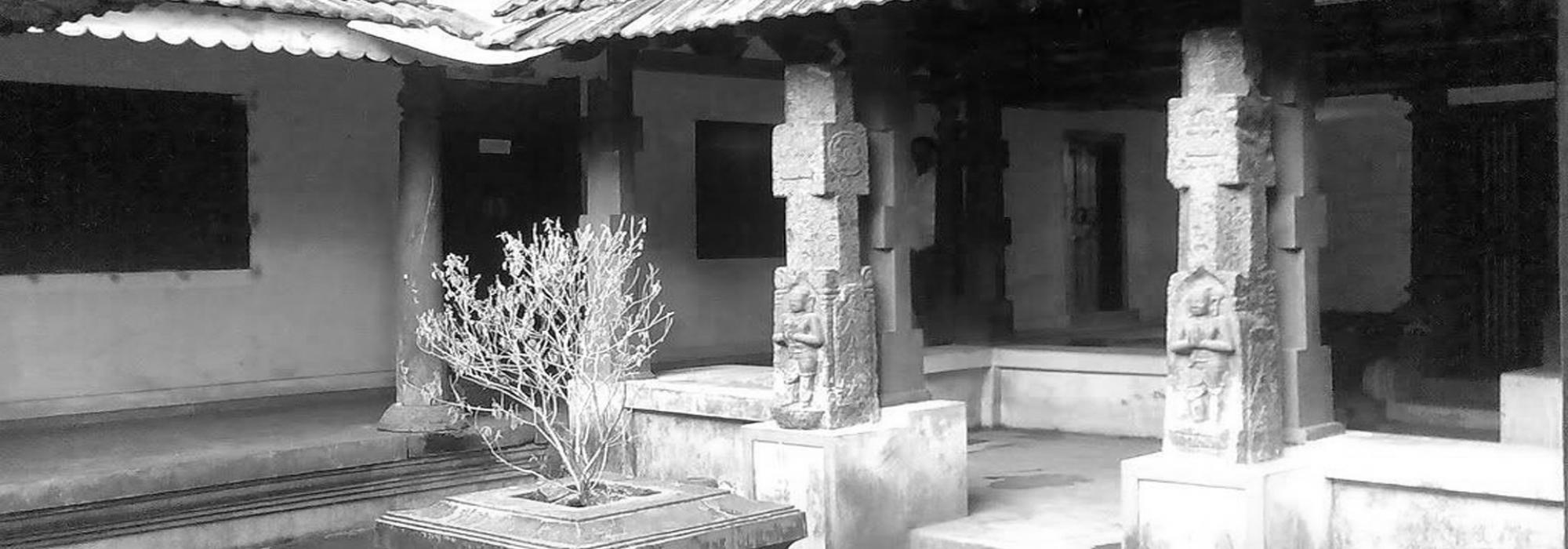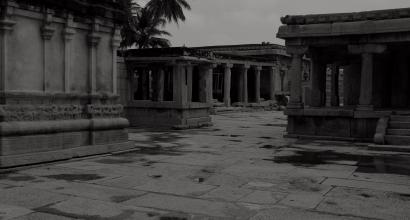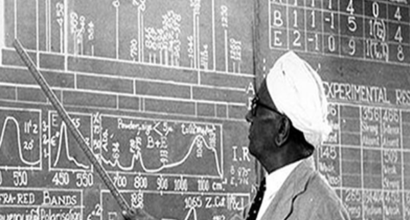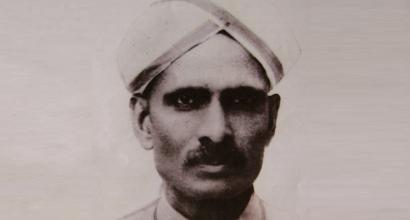Sri Shivashankara Sastri
On occasion, Sri Shivashankara Sastri and Pocambhatlu Narasimha Sastri would visit our home to perform Homams and other rituals. I must have seen Sri Shivashankara Sastri at least a hundred times. There was not a single time when I have not seen him wearing tattered clothes. But he was completely unaware that his clothes were tattered. He never stitched his ragged clothes. He would simply knot the torn edges. His body was covered with scraps of such knots. They were natural to him like the hairs on his beard.
If someone asked him, “Can’t you at least stitch the cloth where it’s torn?” His reply: “Oh no no! Should a Brahmana wear a stitched cloth? It is prohibited by the Shastras.”
There is a reason for recounting this episode. He chanted the Vedas all his life. He ate only two meals a day. Simple meals with very little or no vegetables. Meals without variety or grandeur. He took his bath in the lake. Vibhuti across his forehead. He regarded this as royal splendor and wealth.
He never went seeking food or money or anything. Performing Yajnas and Pratigraha (receiving Daana as part of performing the Yajna): he considered these as his duty.
Atyaashanaadatiipaanaat
yacca ugraat pratigrahaat ||
Not eating or drinking excessively
And not accepting exorbitant Daana
Sri Shivashankara Sastri would fervently pray to God to save him from these sins. We live in an era dominated by the Great Mantra of raising the standard of living, which has swept away precisely this sort of contentment that had endured for ages. This mental poise and purity have vanished. The much-promised material wealth hasn’t arrived. His children and grandchildren are now finding it difficult to obtain the same meal that Sri Sastri used to eat in his time.
Sri Venkatarama Bhatta’s Routine
Sri Venkataramana Bhatta’s routine went something like this: Vedic instruction would commence at five in the morning. At about six or six-thirty, he would mount his horse and leave for the village where he had to perform Pourohitya. After returning at around ten, he would visit the homes of Vaishyas if he had some work there. Then he would return home at about eleven. But before entering his house, he would stand before ours and call out, “Mavayya, Gundoo” [Gundoo is the short form endearment of Gundappa]. Then I’d immediately rush to his house. He would unwrap his gunny sack and then untie the knot of a bag which contained all the items that he had received as Dakshina that day. He would set aside pieces of copra, jaggery, dates, and plantains for me. Rice, pulses, pumpkin slices would be dispatched to his kitchen. He would place the coins [received as Dakshina] atop the nook of the pillar in the vestibule of his house.
Nook Bank
A few words must be said about the specialty of this crown. There were actually four of them. Each was basically a nook formed on top of the wooden pillar at the junction where four wooden logs each from the four directions joined. This nook was Sri Venkatarama Bhatta’s iron safe.
One nook contained cash and coins. The other contained the Yagnopavitas (Sacred Threads) and Pavitras (strands of the Darbha grass). Vibhuti in the third. Metal bowl containing the Mantrakshata (Sanctified rice typically mixed with vermillion or turmeric) in the fourth. A bundle of Darbha grass was placed on the horizontal wooden beam adjacent the nook. The Panchangam on another wooden beam.
This was his wealth. He did not need a trunk or chest. There were really very few occasions when he had to actually spend money. He would routinely give Dakshina to other people. He spent some money every day to buy grass for the cow. When he went to the temple in the evening, he would offer some coins to the Mangalarati plate. The Nook Bank came handy for such expenses. Not once did anybody touch the money he had placed there.
Afternoon Timetable
After returning home at eleven, Sri Venkatarama Bhatta would head for his bath. By then, one of his disciples would be performing the daily Puja. Before Sri Bhatta returned from his bath, about two or three of his disciples would head out of the house progressively towards Shankaratirtha, the Someshwara Temple, Anjaneyaswami Temple, Kashi Visweshwara Temple, and the Vittalaswami Temple. At each place, they would announce: “Brahmanas visiting this town from other places are humbly invited for meals.”
At least two or three such guests would be present at lunchtime every single day. They would first have a bath after coming to Sri Bhatta’s home and sit for their Sandhyavandanam. Some would chant the Sri Rudra Prashna while others would perform the Suryanamaskaram while still others would chant the Navagraha Suktam. There were also guests who chanted the Shivakavaca Stotram or the Indrakshi Stotram. It would be twelve-thirty or one by the time this entire procedure was completed.
For lunch, it was typical to have a serving of Ragi Mudde (literally, Ragi Balls).
An hour of rest after lunch. Veda lessons would begin again at three and go on till five-thirty at which time, people would begin to trickle in meet this great Veda Acharya.
Evening Timetable
Normally, Sri Venkatarama Bhatta would be seated in the gallery area in the inner quarters of the house or he’d be in the courtyard. He would be sitting in some Yogasana. He used to fasten a small dhoti from the direction of his back and wrap it around his forelegs. A whit of snuff was in his palm. The Panchangam would be next to him, together with a tiny box made of the Bilva wood that contained snuff.
I haven’t personally witnessed Sri Venkatarama Bhatta consuming snuff. He simply kept a speck of it in his palm. He rarely sniffed it. He was spotlessly clean all the way from his wizened head to toe. He didn’t tolerate dirt.
People hailing from various Varnas in our town came to see him. Tailors, Vaishyas, potters, Vokkaligas and needless to say, Brahmanas. Those who are now known as Harijans also came to see him. While some would share details of their illness, separations and other tragedies, others would talk to him about their family fights. Still others would share their concerns about marriage. It was also common to seek his advice for fixing the auspicious time for weddings and Upanayanam (Thread Ceremony).
Friendship, Affection, Contentment
Sri Bhatta would patiently listen to the words of every single person who came to him. For those who sought to get the most auspicious time fixed for weddings, he would consult the Panchangam, make the necessary calculations and assign the Muhurtam [auspicious hour for weddings, naming ceremonies etc]. To those who narrated their domestic problems, he would offer solace. He would recount some old legend, some Upakhyana from say, the Ramayana or the Mahabharata in a highly abridged fashion in a manner that conveyed the teaching and message embedded therein. This would comfort the mind of the listener.
Sri Venkatarama Bhatta was a much sought-after person in our town for various reasons. The most important of those reasons was this precise ability to offer such solace. He derived this ability from his innate tranquility. God had blessed Sri Venkatarama Bhatta with these boons—gentleness, warmth, and tranquility.
Indeed, there are any number of Vedic Vidwans and those who perform Annadaana. But there are really very few people who can offer genuine comfort in any place and in any era.
Every day, he would finish his evening Sandhyavandanam and visit the Someshwara Temple. Upon returning, he would begin the Veda lessons, which would continue till nine. After this, lamps would be lit for the Deities at home. This was followed by dinner.
This was his daily routine.
To be continued
This is the third part of the English translation of the second chapter of D V Gundappa’s Jnapakachitrashaale – Vol. 5 titled "Vaidikadharma Sampradayastharu."




































